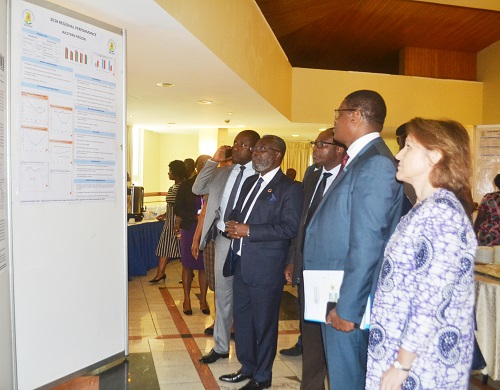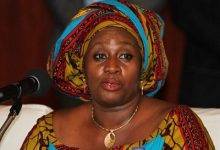
Ghana has for the first time recorded its lowest maternal mortality rate last year with 128 deaths per 100,000 live births as against 144 per the same number of deliveries in 2017.
The progress, however, still falls short of global targets for reproductive, maternal, newborn, child and adolescent health (RMNCAH) targets to reach a maternal mortality rate (MMR) of 70 per 100,000 live births by 2030.
The present rate has, therefore, engendered calls on stakeholders to scale up actions at advancing RMNCAH programmes and interventions to ensure that less women die during childbirth.
This came to light at the opening of the third Maternal, Child Health and Nutrition Conference in Accra yesterday.
The three-day workshop on the theme, “Enhancing integrated RMNCAH and nutrition delivery systems to accelerate the achievement of the SDGs” is expected to share lessons, innovations and best practices to inform policies and strategies in reducing MMR and improve nutritional status of mothers and children in the country.
It brought together health practitioners across the regions and districts of the Ghana Health Service, government officials, development partners, traditional rulers and civil society organisations.
Dr Owen Kaluwa, Country Representative of the World Health Organisation (WHO), in a remark noted that with the current pace of reducing MMR in the country, Ghana could only reach 210 per 100,000 live births by 2030 judging from the 2015 maternal mortality ratio of 319 deaths per 100,000 live births.
“For under-five mortality, Ghana in 2015 was estimated to have a rate of 61 deaths per 1000 live births and at the current pace, we could only reach 36.6 deaths per 1000 live births in 2030 against the target of 25 deaths per 1000 live births.
It is clear that business as usual will not take us to the RMNCAH targets for 2030 and we need to accelerate action and work collaboratively together to advance the implementation of RMNCAH programmes and interventions,” he said.
Dr Kaluwa was, however, confident that with renewed momentum to achieve Universal Health Coverage (UHC) in the country within the last two years coupled with appropriate strategies and collaborations that reflected the UHC agenda “we will ensure that no child, woman or adolescent boy and girl is left behind as we progress towards the attainment of the 2030 SDG targets, particularly, goal three on health and wellbeing for all.”
Driector-General of the Ghana Health Service (GHS), Dr Anthony Nsiah-Asare outlined a number of innovations by his outfit, including a new reproductive, maternal nutrition child adolescent health policy and strategy (2020-2030), digitisation of death audit guidelines, roll out of a combined maternal and child health records book and the implementation of the Girls Iron-Folate tablet supplementation programme, all aimed at improving maternal, child health and nutrition indicators.
Dr Nsiah-Asare was hopeful that Ghana would meet the 2030 targets for UHC “because we are doing extra things to make it happen.”
“We are putting professional midwives at all health facilities, we are commissioning new health centres closer to the people to handle basic obstetric care, training more professionals, providing needed logistics and digitising out systems so by every means possible, we will meet the targets,” he maintained.
Delivering the keynote address, Deputy Minister for Gender, Children and Social Protection, Ms Freda Prempeh noted it was time the country moved towards a “one-stop health care system to holistically address the health needs of Ghanaians.”
“Let us promote multi-sectorial collaborations for enhanced health outcomes to ensure that no mother dies from childbirth,” she urged.
BY ABIGAIL ANNOH







